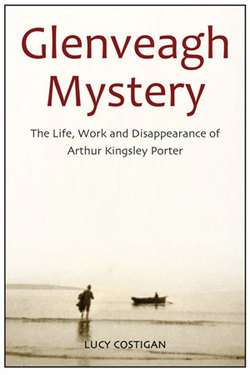Читать книгу Glenveagh Mystery - Lucy Costigan - Страница 10
На сайте Литреса книга снята с продажи.
ОглавлениеGlossary
Altarpiece: A picture or relief representing a religious subject suspended in a frame behind the altar of a church.
Apse: A semicircular recess covered with a hemispherical vault or semi-dome.
Barocco: A picturesque, exalted, architectural style that prevailed in ecclesiastical architecture for two centuries and is most associated with Michelangelo, its creator, and with the architects, Bernini and Borromini.
Capital: Forms the top-most member of a column.
Caryatid: A sculpted female figure serving as an architectural support taking the place of a column or pillar, supporting an entablature on her head.
Cloister: A covered walk in a convent, monastery, college or cathedral on one side and a colonnade open to a quadrangle on the other.
Fresco: Any type of mural painting executed on plastered walls or ceilings.
Gothic: Architectural style that flourished during the twelfth century, and is characterized by pointed arches. The dates associated with the Gothic style are between the twelfth and the sixteenth centuries.
Medieval: A period in history that can broadly refer to the period between the fifth and the fifteenth centuries.
Mosaic: Art of creating images using an assemblage of small pieces of coloured stone, glass or other material.
Moulding: Process of manufacturing by shaping pliable raw material using a rigid frame or model called a pattern.
Portal: Opening in the walls of a building, such as a door or gate.
Relief: Sculpture where the sculpted material has been raised above the background plane.
Renaissance: Cultural movement that began in Italy and spread to Western Europe, spanning the fourteenth to the seventeenth centuries.
Romanesque: Architectural style developed in Italy and western medieval Europe, characterized by semi-circular arches and vaults and by profuse ornamentation. There is no definite period for its development, but it usually refers to monuments built between the sixth and eleventh centuries; between the Roman and Gothic architectural styles.
Sacristy: A room in a church where vestments, sacred vessels and church records are stored.
Sarcophagus: Funeral receptacle for a corpse.
Sepulchral: Relating to a tomb or interment.
Tracery: The stonework elements that support the glass in a Gothic window.
Triptych: A set of three pictures or panels usually hinged together so that the two winged panels fold over the central one.
Tympanum (Tympana): The triangular space or pediment above a portico, door or window.
Vault: An arched form, used to provide a space with a ceiling or roof.
